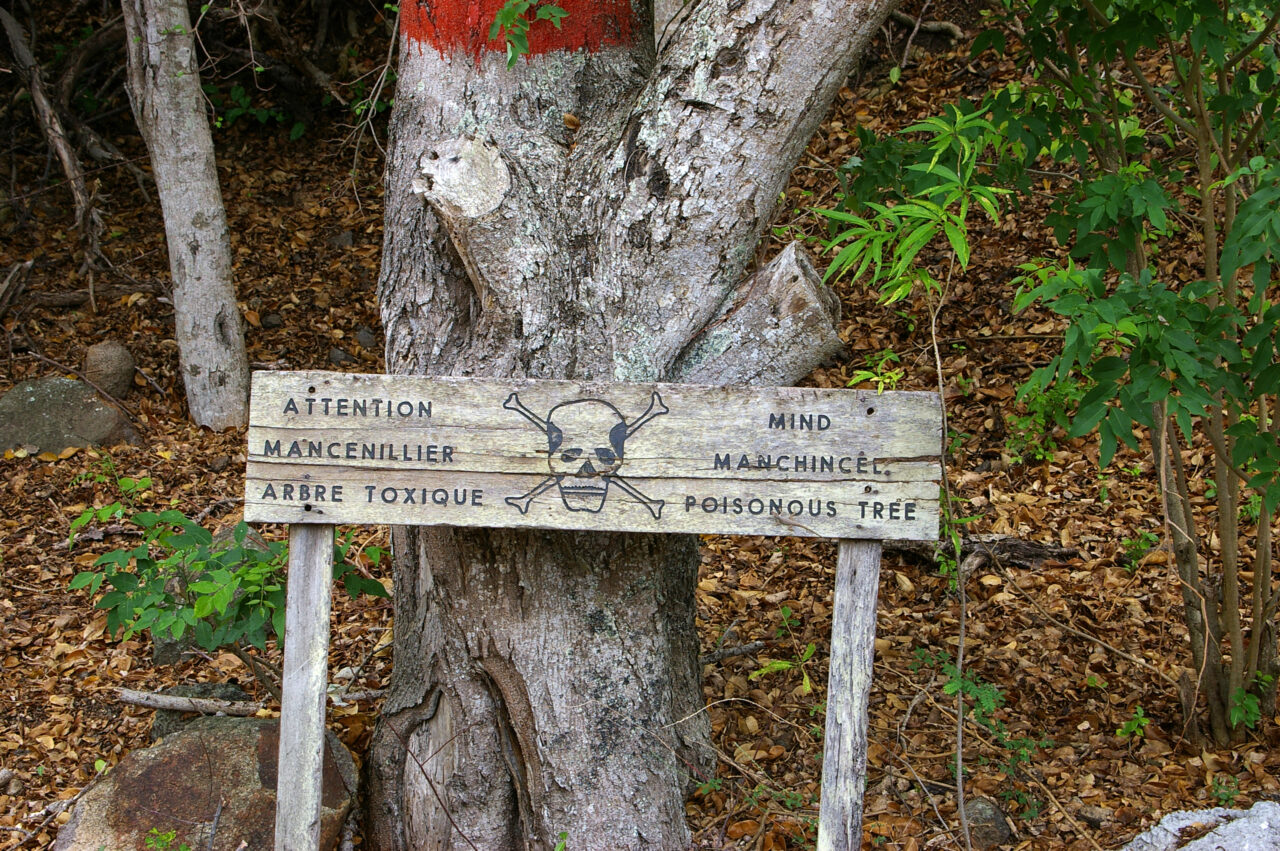Florida is home to the manchineel one of the deadliest trees on the planet. They typically grow near water in the coastal and swampy regions of southern Florida. It’s prudent to avoid them if you encounter them on your travels.
The species (Hippomane mancinella, aka the Tree of Death) is native to parts of Central and South America and the Caribbean. It’s also indigenous to the Sunshine State, primarily in the Keys and Everglades, as it needs tropical conditions to thrive.
The name “manchineel” is derived from the Spanish word “manzanilla.” This means “little apple,” due to the foliage and fruit of this innocuous-looking tree closely resembling those of a regular apple tree. The fruit is alternatively known as “manzanilla de la Muerte” or “little apple of death.” Such a cute and appealing handle, but in reality, this little apple can potentially kill you!
Tree huggers BEWARE! Every part of the tree is poisonous and potentially fatal to humans. They must be assiduously avoided. Merely standing under one during a rainstorm is hazardous. If the sap comes in contact with the skin, it’s known to produce painful inflammation, blisters, and blindness.
The Guinness Book of World Records has even stated that “The sap that its trunk exudes is so poisonous and acidic that the merest contact with human skin causes a breakout of blisters, and blindness can occur if it touches a person’s eyes.”
Interestingly, many historians believe that the explorer Ponce de Leon met his untimely fate as a result of an arrow dipped in Manchineel sap.
Additionally, it’s not a good idea to burn the wood of the manchineel tree, as airborne ash can cause severe irritation and sometimes blindness.
Annihilating the entire species is not an option, as they are an endangered, protected species. Manchineel trees are extremely important environmentally speaking, as they provide a natural windbreak against storms and effectively reduce beach erosion.
Manchineel tree’s trunks often have a bright red band painted around them, in addition to cautionary signs alerting hikers of the imminent danger. Before embarking on hikes in these areas, it’s good to be aware of what they look like and give them a wide berth.
This innocent-looking tree has brightly colored waxy green leaves and round, yellowish-green fruit. The manchineel has no overtly outstanding features and looks like an ordinary tropical tree.
Here is a link to the cautionary tale of a manchineel tree encounter from the BJM medical journal.
Although the manchineel is an excellent deterrent against wind and erosion this deadly tree should never be intentionally planted on coastal properties. They need to be respected for their protective qualities and be left alone to do what nature intended. Humans should steer clear of the manchineel at all times, especially those well-intentioned tree-huggers!



